Subscribe to The Podcast by KevinMD. Watch on YouTube. Catch up on old episodes!
Medical student Rishma Jivan discusses her article, “Medical curriculum 2.0: Integrating technology and innovation in medical education.” She argues for an urgent update to medical training, embedding technology and innovation as core components to prepare future physicians for a digitally transformed health care landscape. Rishma highlights the necessity for medical students to become active contributors to health technology, not just end-users, to address pressing issues like physician burnout and patient distrust, and to bridge the gap between tech development and clinical needs. The conversation explores integrating concepts like the Minimum Viable Product (MVP) approach from the tech world into medical thinking, fostering collaboration between medical professionals and technology developers. She proposes a curriculum enriched with hands-on experiences, partnerships with innovators, and inclusion of diverse voices to ensure new solutions are equitable and effective. The key takeaway is: It is imperative to evolve medical education to equip the next generation of physicians with the skills to co-create and implement innovative solutions for better patient care and a more sustainable health care system.
Our presenting sponsor is Microsoft Dragon Copilot.
Microsoft Dragon Copilot, your AI assistant for clinical workflow, is transforming how clinicians work. Now you can streamline and customize documentation, surface information right at the point of care, and automate tasks with just a click.
Part of Microsoft Cloud for Healthcare, Dragon Copilot offers an extensible AI workspace and a single, integrated platform to help unlock new levels of efficiency. Plus, it’s backed by a proven track record and decades of clinical expertise—and it’s built on a foundation of trust.
It’s time to ease your administrative burdens and stay focused on what matters most with Dragon Copilot, your AI assistant for clinical workflow.
VISIT SPONSOR → https://aka.ms/kevinmd
SUBSCRIBE TO THE PODCAST → https://www.kevinmd.com/podcast
RECOMMENDED BY KEVINMD → https://www.kevinmd.com/recommended
Transcript
Kevin Pho: Hi, and welcome to the show. Subscribe at KevinMD.com/podcast. Today we welcome Rishma Jivan. She’s a medical student and she co-wrote the KevinMD article, “Medical curriculum 2.0, integrating technology and innovation in medical education.” Rishma, welcome to the show.
Rishma Jivan: Thank you so much, Dr. Pho. It’s wonderful and an honor to be here today.
Kevin Pho: Thank you. All right, so tell us the events that led you to write this article and then talk about the article itself.
Rishma Jivan: Thank you for letting me speak about the article here. My journey into medical school started with almost five years that I took off between my undergrad and medical school. In that time, I worked in health tech back in the Bay Area. Then I joined medicine and I realized how different the frameworks that we’re taught are, how we look at and approach problems, how we develop solutions. They were pretty different. I wrote this about two years ago, my first draft, and I remember thinking it would be a great way for me to bring together the two sides of my professional career and portray what I have learned and how I think they could be integrated. I took it to my co-authors, Dr. Latif and Dr. Hotta, and they loved it and added their insight as well. I appreciated that. That led me to writing this article.
To provide a summary for those who haven’t had a chance to read it, I talk about how medical students are trained, but we forget to take a very important part of our professional life and are not being taught that. So, how to not only use technology that is going to be a part of our professional lives, but how to co-create it. Going from being a user to a co-creator. That is a transition that I speak about.
How the frameworks of something as simple as creating the minimum viable product, which is having the basic user stories in tech and saying, “We’re going to address this, and then we will keep iterating the product.” That approach is very different from what we’re taught in the medical curriculum. I think there was a lot of value in bringing medical students from the get-go into the spaces where we’re creating these solutions so that we have a better chance of having them be successful. That is, the article provides a framework for that and some more insight into that.
Kevin Pho: All right, so you said that you spent five years in that health IT space in the Bay Area. What was it like then knowing that you may go into medicine? So contrast a little bit about those two different cultures.
Rishma Jivan: It wasn’t something I expected to do. I did my undergrad in biochemistry. I was pre-med, and then I started off as a medical scribe. I was at a company, a Google Ask startup. After a year, I thought, “Oh, I want to know what else I can do here.” I started working as an EHR analyst, started working on EHR implementations, and then eventually went on to work at a different company where I developed revenue cycle management products and things in Salesforce and learned a lot about product development and project management. It happened by chance, trying new things because I truly felt blindsided by all the aspects of health care that I wasn’t getting in touch with as a pre-med.
We interact a lot with health insurance. We interact a lot with EHRs, whether it’s as a scribe, a dictation tool, or a wearable device that our patients are telling us about. There are so many components that impact patient care and a patient’s life and how they’re interacting with health care that I didn’t know when I was a pre-med.
That space allowed me to understand what innovation looks like. It looks imperfect, but it is very targeted. It’s guided by a problem that you see, and to see that there are so many ways in which we can find a solution. We can iterate it if it’s not perfect the first time. How we can collaborate with people in different spaces. I don’t have an engineering background, but how connecting with them and speaking to them about developing something, how to streamline workflows—they are all very important skills that I think are transferable. I enjoyed that, and I’m grateful for that experience. I think it makes me more informed in terms of how I’m interacting with my patients. I hope that I am able to take that back and say, I create this bridge between creating these solutions and providing patient care and saying there’s a more integrated way in which we’re approaching that.
Kevin Pho: So you’ve had your foot into both worlds. Your experience in the health IT space, and you’re a fourth-year medical student, so you had a few years of being exposed to clinical medicine. One of the things that you touch upon in your article is that sometimes these health IT tools aren’t as integrated or used as much because there’s sometimes a lack of clinical understanding in these health IT startups. Is that true? Is that a stereotype that I often read? So tell us about that aspect.
Rishma Jivan: It’s something I understood along the way when I was working at one of the clinics that I volunteered at on the weekends. It was a free clinic back in the Bay Area, and we worked with uninsured and underinsured patients. We had the COVID pandemic, and our patients are not necessarily from backgrounds where they have easy access to telehealth. There’s a digital divide there. It’s one phone between family members and things like that. There were a lot of things that we were juggling at the time, and there was this approach that we wanted to take, which was reaching out and being a telehealth medicine clinic for our patients and not disrupting their care. But when you looked at the clinician side, they had great clinical judgment, but there was a gap: how can we do that?
I was working with somebody who took care of our EHR at our clinic, and we talked about how we can use simple project management tools with Kanban boards, Zoom, and things like that to start a telehealth clinic. At that time, we experimented with that a little bit, and we were able to make that work. Now, every weekend (I just went back for an anniversary for the clinic), we have a telehealth clinic for our patients. When we took that into consideration, saying, OK, there are some patients who may not always have access to, like, an iPhone to call us over video, but here are the steps we can take to ensure that they’re available on the phone at this time. That created this synergy of conversation: OK, well this is how much time we’re going to need to talk about their diabetes. This is what we’re going to need for follow-up. OK, let’s take it back to the drawing board and say, OK, this is how we’re going to do it. We’re going to use this integration in this platform, and we’re going to send out these reminders, and we’re going to send it as a text message because they don’t have this platform on their phone. These conversations started taking place and providing even better care, by having care evolve and how we’re providing that care evolve.
So, I do think that because of that synergy, we were able to create a version of workflow that worked for everybody at the clinic. That’s what I like to highlight: while there are moments where we don’t always have the space to create that collaboration, I want to say that there is a lot of value in putting in the effort to do that, and maybe even taking a second to describe the two languages that we’re speaking. People who are building products are speaking very different languages than those who are using them. Sometimes the activation energy can be high in the very beginning, but I think it’s an exponential understanding after that initial bump.
Kevin Pho: Now, in your article you explain and argue why medical students need to be better versed in the language of health IT and health entrepreneurship. So give us more details as to why they need to know that information.
Rishma Jivan: For a very long time, and increasingly so of late, we’ve started having more individuals come from diverse backgrounds into medicine. The pool of medical students right now who are entering the workforce are more diverse than the pool that we’ve had in the past. That already highlights or brings perspective that we don’t have. They’re bringing the perspective of, OK, we can say this is what an ethnic group needs to do necessarily because they’re predisposed to certain conditions. But when we have students in this space, they can tell us how they interpret that information that you give them. They say yes here, but then they may not go back because it doesn’t culturally align. That is something simple that we have come to understand better. But then how are we communicating that? How are we using that to then say the portal needs to be able to provide that feedback as well?
Sometimes, as we’ve discussed (I think with a few of my mentors), if you educate a certain person in a family, you educate that entire family. When you bring more people who are coming from diverse backgrounds—not only ethnically diverse but also professionally diverse—and you put them in these spaces together, you are already starting a practice of collaboration between people who are very different. That sets a great stage for the workforce to then become more collaborative. That’s why I think it should be started earlier.
It also starts to build this idea that, OK, let’s look for the little gaps that we have in health care. Let’s look at, we’re going into, let’s say third year, we’re doing all these rotations. “Oh, I see that gap. Oh, that’s a communication issue that we have.” Is it happening across all disciplines? Yes, it is, because third-year medical students are moving through specialties a lot faster than those already in the workforce. We’ve already decided our specialty once we’re in the workforce. We think it provides a lot of value in bringing these fresh eyes into these conversations and then empowering them with these tools and making them feel even more a part of health care. Because that’s why we came into medicine. We wanted to improve patient care, and we wanted to be directly responsible for that. This allows us to add another layer of that component and contribute to the industry in a more valuable way.
Kevin Pho: Now, can you give us an example—and I know that you’ve just finished your third year of medical school—but it certainly could be a story of something that you’ve seen, of either yourself or someone with that tech background making a difference in clinical care, having that tech experience and knowledge. What would be a story and an example of that?
Rishma Jivan: I’ve been working on this project with some of my mentors. We often see, at least if you’ve done some of your primary care rotations, that there are a lot of delays sometimes when the patient is coming to see the provider. A lot of these patients take time off from work. They drove a long distance. Depending on where you are in the country, you don’t have easy access. They’re waiting, and it affects their schedule, it affects their child pickup, things like that.
There are certain tools that we’ve been working on where we’re able to gather pertinent information about their health care or what condition they are coming in for, and getting that before they come into the clinic to make that clinic visit a lot more efficient. What that means is that they’ve also had time to process the timeline of their condition, what they’ve been experiencing, and being able to take their own time and not feel like they’re being rushed to provide that information. It also helps them understand, “We’re going to prioritize these three things that you’re coming in for, so what are those?” You are not put on the spot.
When they come in, they’re able to then know that their physician is ready to target those three items that they have been worried about, and they know they are going to be taken care of. It also provides the physician a certain layer of added information about what this visit is about compared to only chart reviewing. There are instances where physicians are told you can only spend X number of minutes with your patients. It takes away a certain level of burden from that time limit when you employ tools like these.
We also recognize that this is not necessarily going to address the geriatric population that doesn’t necessarily know how to use these portals, but it can help in certain populations and then hopefully create a certain level of balance. That is something that is in the works, and I think there are versions of that that others are also trying. I can’t speak more to that, but that is something that we’ve been thinking of.
Kevin Pho: Now, when it comes to incorporating more technology and health IT knowledge in our medical students today, what exactly would that look like? Would it be internships? Would it be rotations? Would it be electives? How would you envision that happening?
Rishma Jivan: I highlight some of those as some of the ways that we can do that because we can do case studies all we want, we can review it, but we know in medicine that hands-on experience is the best. I think partnerships are a great way. I think adding a level of expectation on our faculty currently on being at the cutting edge of what is happening in tech can be quite a lot because it happens at a rate much faster than we can keep up. I do believe collaboration and partnerships are a great way to start off.
It could be local leaders in the space, whether they’re having a new startup. It could be institutions that have engineering programs where they have little hackathons or areas where they’re coming together to talk about, “Hey, this is an idea I have,” or “This is what I need a solution for.” Then you start creating projects together, you start working on them, and you have resident advisors. You can also partner with incubators in this space. Most major cities tend to have them for startups and say, “Hey, do you have any companies in the health care space that would require clinical judgment? Would require that additional feedback? And do you want beta testing done?”
Because physicians may not have as much time. Medical students might have a little bit more time, and they might have a little bit more perspective on how to do this, a little bit more tech-savvy, possibly. The learning curve can be a lot shorter. Those are some of the ways that I recommend working on it. I think elective rotations are a possibility. But those are great places to start building a curriculum, I think, for the students that are involved and want to be involved.
Kevin Pho: Now, what about those medical students who may be listening to you and are inspired by what they’re hearing, and they want to take the initiative and look for opportunities in the health IT space? What kind of advice do you have for these types of students?
Rishma Jivan: I would say, please come in if you have space; we need this. I would recommend starting out very local to understand some of the basics. So if you don’t have a background (I’ve done this in the past), I would go to Udemy, Coursera, YouTube, LinkedIn webinars to understand the basics of what I’m interested in. So you could be interested in AI. Look up the basics of machine learning and AI. What are data algorithms, things like that. What does it mean to build a product? Often, you may not understand the very basic things that they’re talking about, but you’re starting to get exposed.
Reading articles—many of them are on KevinMD—and then reaching out to individuals at your hospital. There are going to be clinicians at your hospital that work on EHRs, that work on workflows like these, and saying, “Hey, I am interested in this. Can we get together and talk about certain projects?” If, for whatever reason, you don’t find those available at your institution, there are always other institutions in the city. I’ve done that; I’ve worked with other universities as well and reached out to them. Cold emailing is a very beneficial skill to have. It helps a lot, and you learn a lot.
LinkedIn is a great tool. Learn who’s in the space. What kinds of things are they speaking at or what are they saying? What are the articles out there? Those are great places to start off, and then you would learn a little bit more along the way. I would say the space of health tech, especially with clinicians involved, tends to be pretty small. Once you start getting into one project or talking to one person, they’ll often tell you, “Oh, speak to this person too. They’re working on this aspect of health care and health tech.” It will have a domino effect, and you’ll get more projects. But I would say that taking those courses, and even shadowing to an extent, or talking to somebody at your hospital and health care system about what they’re doing is a great start.
Kevin Pho: We’re talking to Rishma Jivan; she’s a medical student. Today’s KevinMD article is “Medical curriculum 2.0, integrating technology and innovation in medical education.” Rishma, let’s end with some take-home messages that you want to leave with the KevinMD audience.
Rishma Jivan: Thank you so much. I think we can take on the idea that tech is going to take over jobs, be worried about it, and I think that fearmongering often leads to a sense of deviating you from knowledge and information that you could use to help patient care. So I hope that everyone who has listened or has watched this podcast episode or read the article feels empowered to take that one more step and learn a little bit more about what’s happening in this space. All your perspectives are valuable. I am hoping that we are all empowered to co-create solutions. We understand patients better. We are so informed of clinical judgment as well as patient care, and we understand policy. So all of those make us great advocates for where solutions should go and how health care should be driven. I hope that this empowers more people and inspires more people to join the space. Thank you very much.
Kevin Pho: Rishma, thank you so much for sharing your perspective and insight, and thanks again for coming on the show.
Rishma Jivan: Thank you. Thank you for having me. It was wonderful.


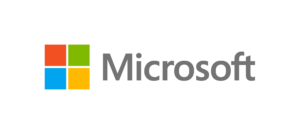






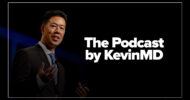
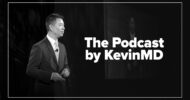
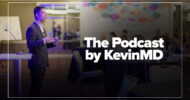






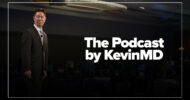
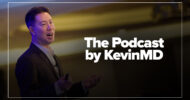


![Why physicians must lead the vetting of medical AI [PODCAST]](https://kevinmd.com/wp-content/uploads/The-Podcast-by-KevinMD-WideScreen-3000-px-3-190x100.jpg)




